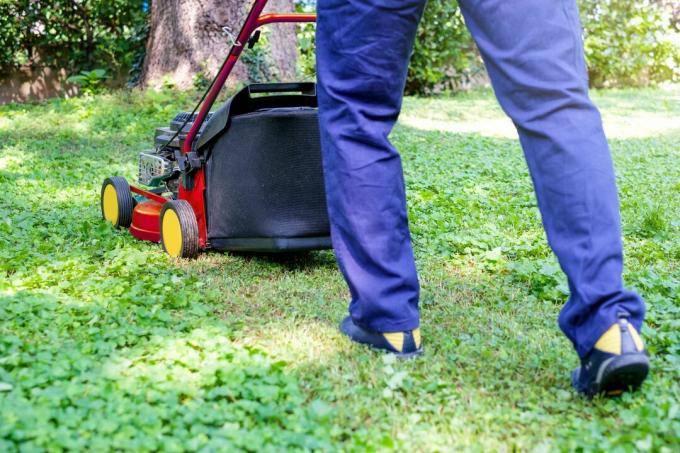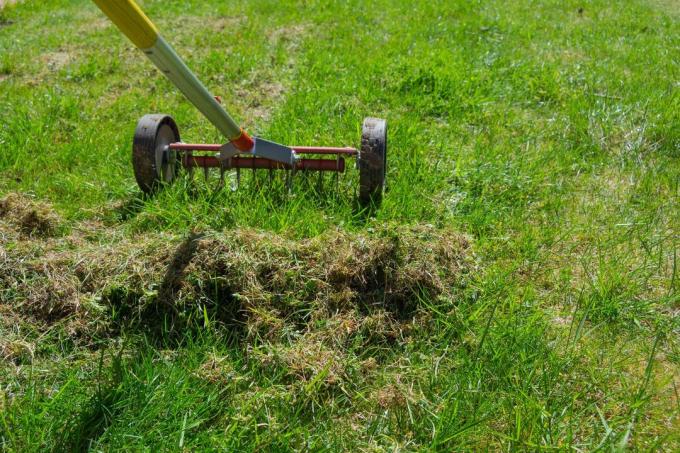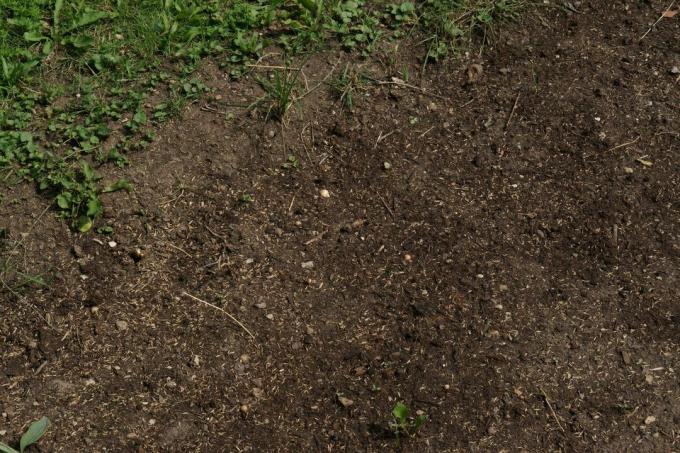Is your lawn neglected, covered with weeds and moss? We show how you can create a new and magnificent lawn without digging and at low cost.

contents
- Buy tested lawn seeds
- Mow the lawn according to these instructions
- Scarifying is a must
- Spreading lawn seeds and fertilizer: this is how it works
- Make sure to cover the lawn seeds
- Water the lawn after sowing
Buy tested lawn seeds
In order for the new planting of your lawn to be promising, you should definitely only use quality seeds. Only lawn seeds with the regular seed mix label (RSM) meet the highest quality standards. The grass types contained there are specially bred for the needs of ornamental lawns or the more resistant lawns for use. The RSM label has its own abbreviations for ornamental and practical lawns. If you put more emphasis on resilient lawns, then look for the type 2.2 - 2.3. For representative Type 1.1 is more suitable for this purpose. There are also specials for dry and shady locations Seeds. If you are unsure when choosing a seed, it is always advisable to consult a professional. Because the choice of seeds is the most important basis for a beautiful and long-lasting lawn.
Mow the lawn according to these instructions
The time for renewing the lawn should be chosen in the warm months, i.e. from May to September. Then the soil offers the best germination conditions for the lawn seeds. In order for the new grass to have a chance at all, the old lawn must be weakened. To do this, the mower must be set to the deepest possible cutting depth and then the entire lawn should then be mowed. It is important that all clippings are removed from the lawn. In the case of larger problems with weeds, this step also serves to weaken the unpleasant herbs.

Scarifying is a must
Over time, dead blades of grass accumulate and form a thatch. Removing the lawn thatch is one of the most important work steps. If the new lawn seeds were simply sprinkled on the felt, an extremely low germination rate would be the result. A commercially available scarifier is suitable for removal. With this, as usual, the surface is traversed several times in the transverse and longitudinal direction. Of course, the then exposed lawn thatch must also be thoroughly removed with a rake.

- WOLF-Garten electric scarifier: Scarifier with 1,300 W motor. Comfortable working width of 30 cm with a moss rake and a 35 l collection bag.
- WOLF-Garten pendulum scarifier: Thoroughly clears the lawn of moss and thatch with pendulum-mounted scarifying blades.
- GARDENA Scarifier Boy: For removing moss, weeds and thatch on small, flat surfaces.
tip: In areas that are particularly heavily weed, it is advisable to use herbicides before sowing.
Spreading lawn seeds and fertilizer: this is how it works
Now you should apply both the starter fertilizer and the lawn seeds with a spreader. However, a few things must be observed: In addition to a high-quality regular seed mixture (RSM), the use of a special lawn fertilizer is also very useful. A lawn fertilizer with a high phosphate content should be used to create a new lawn. Among other things, the phosphate promotes the development of roots and side shoots in the grass.

Make sure to cover the lawn seeds
After spreading, the lawn seeds lie unprotected on the surface of the earth. This allows the seeds to dry up and die off quickly during germination. In order to avoid this unfavorable circumstance, it is advisable to apply a thin and protective substrate layer (no thicker than half a centimeter). Usually fine, unfertilized peat is used for this. But you can just as easily use organic alternatives such as coconut pulp. It is only important that the litter component is only weakly fertilized or not fertilized at all. With this step you will achieve significantly better germination successes.

Water the lawn after sowing
After the lawn is finished, you are almost there. Now you have to wait and water regularly. During the germination phase of the lawn seeds, the surface of the earth must no longer dry out. Depending on the weather, the area may therefore have to be briefly watered several times a day. Sprinkler systems with fine water droplets are best suited for this. Heavy watering can quickly wash away the tiny seeds and ruin all of the previous work. Since some types of grass take up to 4 weeks to germinate, watering must be carried out continuously for at least this period.

Plantura wishes you lots of fun with your new lawn!



